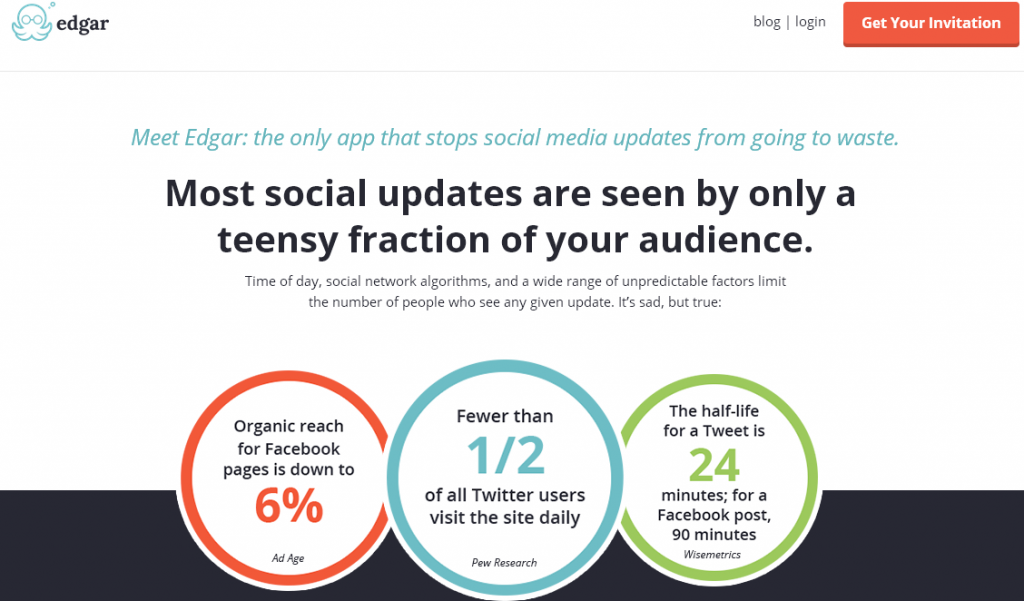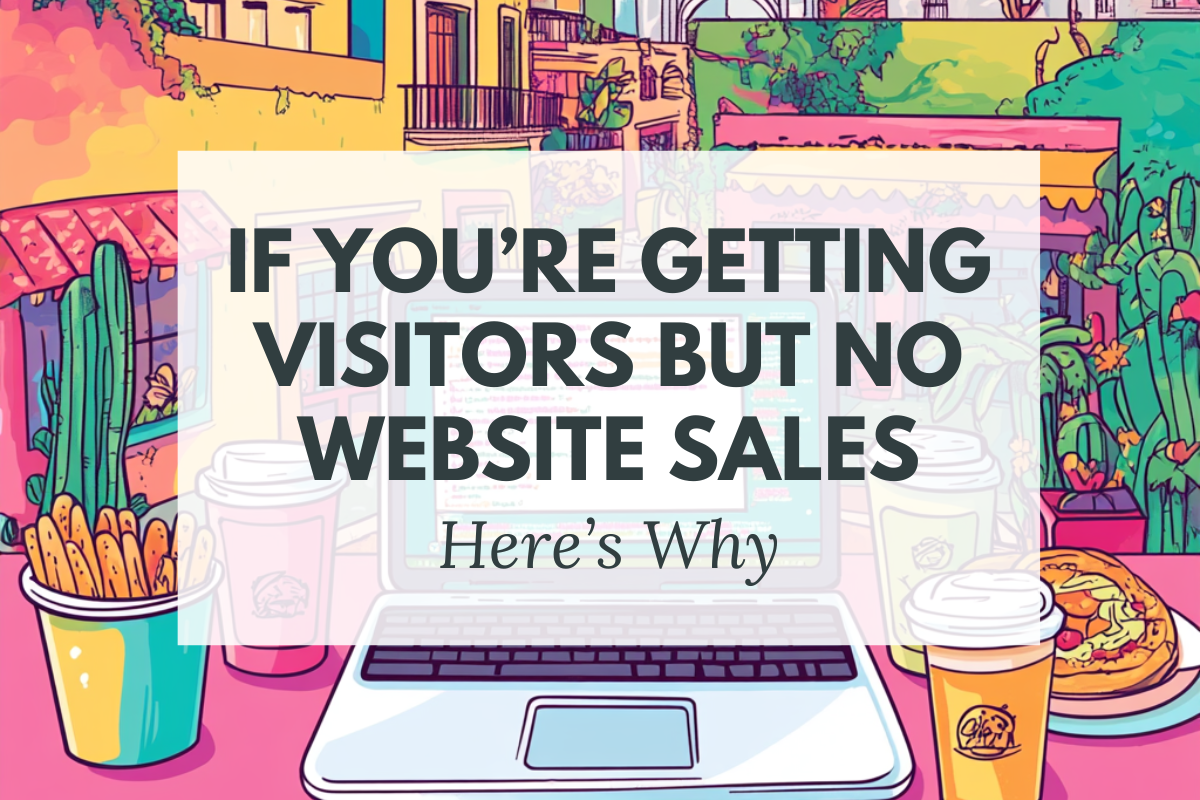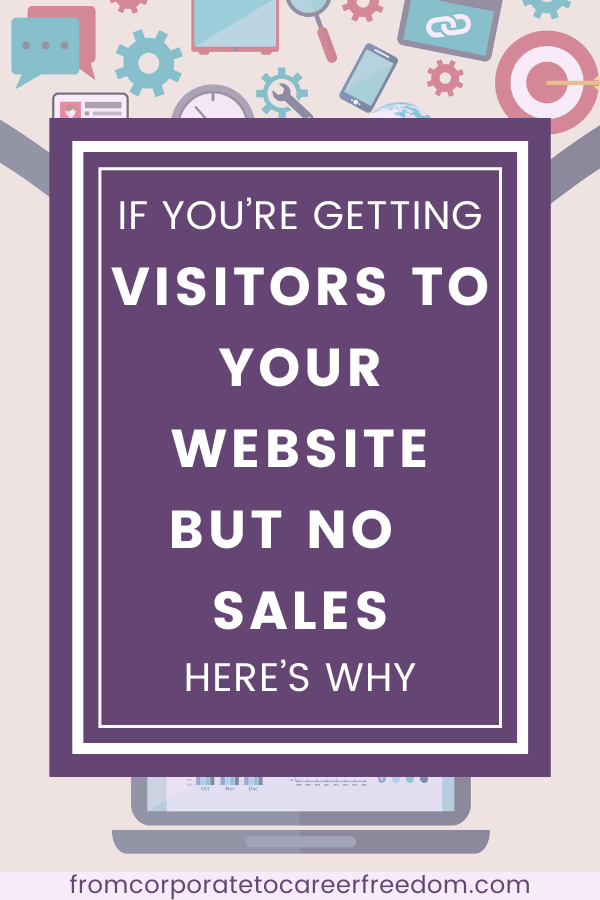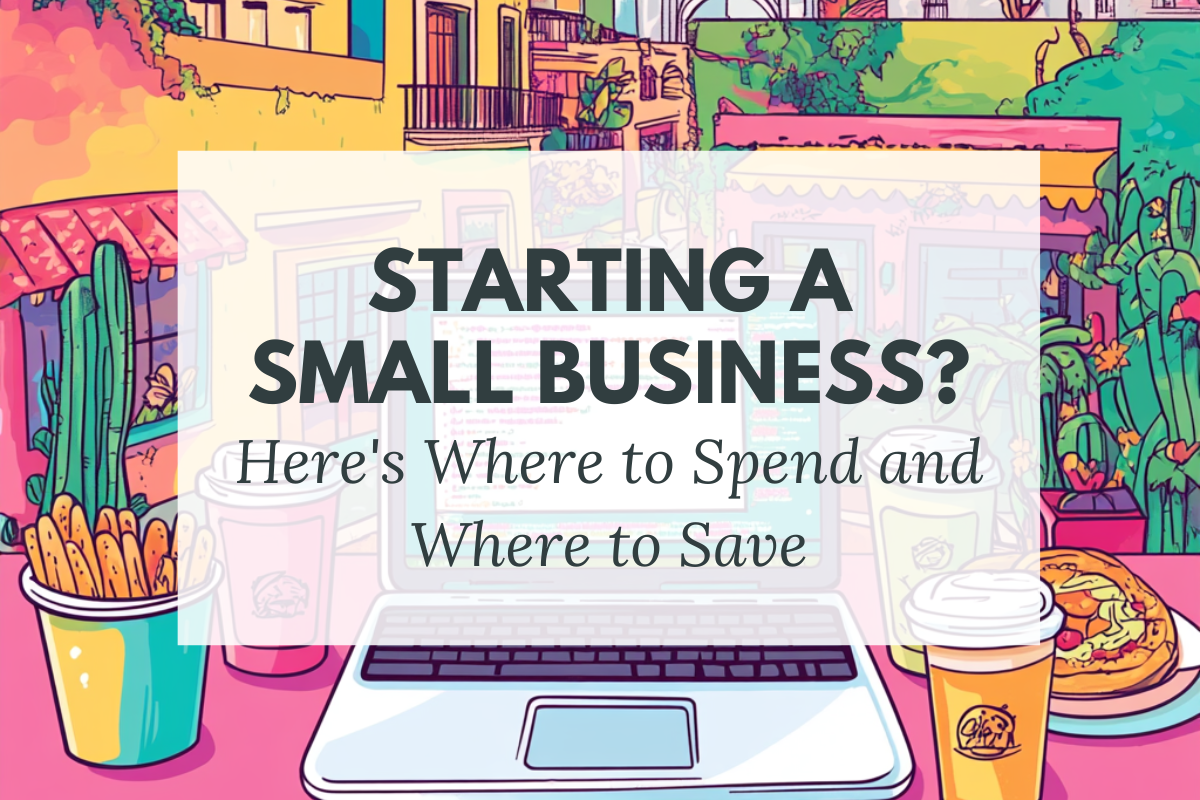A new business and no website sales. Or, as I call it, the website launch trap. It’s a problem many entrepreneurs fall into: they spend time and money building their perfect website, fine-tuning their product offering, getting traffic, and then…..wait a minute.
Where are my customers?
It can be so frustrating to an entrepreneur who has put their heart and soul into creating something from scratch. You know you have a fantastic product. You really believe in what they are doing. But people just aren’t buying it. And the longer this goes on, the more you start to doubt yourself:
Am I in the wrong business?
Is my product just a failure?
Why isn’t anyone coming to my website?
Before you fall into a pit of despair from seeing traffic on Google Analytics but no sales, and think you are going to have to close the doors on your new creation, read ahead. Here is a list of some of the most common reasons for why people aren’t buying from you. And the best news of all is that most of them are pretty easy to fix.
This is a contributed post. Please refer to my disclosure for more information.
Note this post may contain affiliate links. Please refer to my disclosure for more information.
What We’ll Cover In this Post
Here’s a teaser of what we’ll cover in this blog post:
- The Real Deal on Web Traffic: Learn why more isn’t always better and what really counts when it comes to visitor quality.
- Clarifying Your Offer: Discover the critical importance of making your value proposition crystal clear to your visitors from the get-go to get website sales.
- The Power of Authenticity: Uncover how being true to your brand can resonate more deeply with potential customers.
- Encouraging Repeat Visits: Find out the smart ways to keep your site sticky, encouraging visitors to come back until they’re ready to buy.
- Building Trust Online: Learn the strategies for laying down the foundations of trust with your audience, a must for converting browsers into buyers.
- Excitement Factor: Dive into the necessity of differentiating your offer in a crowded market and how to make your product or service stand out.
- Optimizing Your Sales Page: Get insights into the art of persuasive sales pages that convert interest into action.
- Testing Market Demand: Explore the importance of validating your product’s market fit before going all in.
- Streamlining the Checkout Process: Understand how simplifying the path to purchase can significantly reduce cart abandonment.
- The Bonus Strategy: See how the right incentive at the right time can be the tipping point for decision-making.
Reason #1: You’ve believed the hype that it’s “all just a numbers game”
Let me crush a myth for you. Selling on the internet is not a numbers game, and don’t let anyone convince you that is the case. You may choose to buy website visitors via a paid ad campaign. But by simply driving thousands of visitors to your website, you are not guaranteeing that a single one of those visitors will buy from you, and here’s why:
100 high-quality visitors will drive you more sales than 1000 low-quality visitors
What do I mean by quality visitors? I’m referring to your target audience – the people who are a perfect fit for your target customer. If you are a business targeting women over the age of 55 with an interest in arts and crafts, then you really need traffic from this demographic, not traffic from teenage boys.
Your first step to getting quality traffic from search engines is to understand exactly who your target customer is. When you’ve done that, figure out where they hang out online. Are they on Facebook? Do they do all their product research on Google? Are they on forums? Use this to determine where you should be focusing your traffic-building efforts before you buy visitors to your website or use organic marketing methods. And always stay in the know about SEO best practices.
You can also use a tool such as Quantcast to help you determine if you are currently getting poor-quality website traffic. They will provide you with details of the current visitor demographics for your site.
Reason #2: Customers don’t understand what you are offering
When buyers make a purchasing decision, they go through a 4-stage thought process:
- I have a problem that needs solving
- How do I need to solve it?
- Let’s look at all the options available
- Now I’m ready to make a decision
You have to grab them at point number 1. The first thing to demonstrate to your customer is that you understand exactly what their problem is, and that you have a solution. If you aren’t doing that, they will never skip to stage 2. They will just leave your website.
And this thought process happens fast. Jakob Nielson suggests that you need to communicate your value to the visitor within the first 10 seconds.
Make it clear on your homepage how you can help your customers. Use language your customers can understand and relate to. Communicate to your visitors that you understand them and that you are on the same wavelength.
Reason #3: You don’t seem authentic
Authenticity can make or break a website. A study by Goodpurpose found that 53% of customers were influenced by social purpose when making a buying decision. Visitors want to understand your intent as a business, over and above just taking their money.
One of the main ways to break down the barrier between you and your visitor is to deliver a message with authenticity at the heart. Don’t try to emulate other websites or other businesses. Be honest, be open, be you. Establish what your values are as a business and let these values shine through. If you allow authenticity to form a central part of your brand, it will go a long way to building a relationship with your audience.
We get that sometimes it can be hard to properly articulate what it is that makes your business stand out, or why clients and customers should take that first step with you. Too much persuasive language can seem overbearing, while too little can fail to nudge your potential audience in the right direction.
Copywriting is a skill, especially when formatted on websites that require punchy, proactive prose aimed at putting a point across reliably, and without conceit. Using services such as content writing by FATJOE can help you iron out the kinks of a landing page, securing your website’s voice for the better.
Reason #4: You aren’t giving customers a reason to return to your website
Not all visitors will discover your website with the intention to buy. In fact, according to Forrester Research it’s likely to be as low as 2-3% of visitors.
Sometimes visitors may stumble across your website by accident. They might be looking for information to help them make a buying decision, or simply browsing around. They might like your website and what you have to offer, but they don’t need to buy anything right now. Those are precious visitors that you’ve spent time and money enticing to your website, so you don’t want to waste that effort by saying goodbye to them so early on in the relationship.
There are three ways you can handle this problem:
Option 1 (the icky way): give them the hard sell! Convince them that they MUST want to buy now.
No, let’s not choose this option. Need I explain why?
Option 2: Bookmark us please! Please?
Well, that’s a nice polite request. But let me ask: how often do you use your bookmark function? How often do you return to a website you’ve bookmarked? My guess is that it isn’t very often.
Option 3: Hey, lovely of you to stop by! If you like what you see, drop your email address here and we’ll send you some super freebies/discounts
This option is your best strategy for capturing visitors’ attention, and it is the same one that many smart businesses use. If you can give visitors a compelling reason to hand you their email address, then you can keep in touch with them so that when they are ready to buy, your business is the one they remember.
Reason #5: You haven’t built up trust with your audience
Building trust is a huge challenge on the internet. Web users are rightly skeptical about businesses they are unfamiliar with, and whether or not their money is going to be spent on something that will offer them quality and value. Here’s how you can help to build trust with your audience to boost website sales:
- Be patient. Building trust takes time, so think about the long-term gains of slowly and gradually establishing a relationship with your customers. High traffic won’t mean high sales overnight. But work at it.
- Exceed expectations for your customers. Happy customers lead to great testimonials. Try boosting your customer service support with something like live chat – AI makes that really easy nowadays.
- Offer guarantees on what you sell. So many businesses are scared to do this for fear of customers abusing it, but there is no need to shy away from guarantees. If you really believe in what you sell, and you know you will thrill your customers, then have the confidence to offer it.
- Use social proof: Get existing customers to provide testimonials. They can comment via social media, write a review, or produce a video. Whatever you can get, use it and make sure it’s visible on your sales page.
- Speak their language eCommerce businesses are often global. And to build a great eCommerce website, you need to be ready and willing to serve foreign markets. If you’re an international or continental company, you need to have a translation team working for you. Wherever their office is, you should stay in contact 24/7, so when you add new products and deals to your eCommerce store, they can be asked to translate product descriptions, pages, prices, etc, into the languages whose markets you’re in. Having an eCommerce website with several language options is going to immediately open up your business up to millions of more people.
Reason #6: You are just not that exciting
Ouch. That’s a hard one to hear. But if you really want to push your business forward, you have to be brutally honest with yourself. Do your products and services look exciting? Ask yourself (honestly) if they look different from what people have already seen on the internet. Do they give customers something new to think about? Or are there similar products that can be purchased at dozens of different websites? Have the courage to be different, to be exciting, and your business will thrive.
Here are two brands I personally love, and when I read their websites, their product offerings really excited me:
Lost My Name
The high quality graphics on this site is the thing that won me over (so much so that I actually purchased one for my daughter). It demonstrates that creativity wins over blandness any day of the week.
Edgar

This is a company that is really getting it right. They don’t make sweeping statements, but they do make exciting claims that they know will grab the attention of customers, and they back their claims up with evidence. Think about your user experience and whether you are engaging your customers the moment they land on your website.
Reason #7: Your sales page needs some punch
You might not be aware of it, but you could have lots of fence-sitting customers. These are customers who like what you have to offer, want what you have to offer, but can’t quite commit to a decision because you haven’t done enough to persuade them.
Here are a few questions to ask yourself about your sales page:
- Are you trying to sell the benefits or the features? Customers are interested in how a product is going to benefit them.
- Do you understand what your buyers’ motivations are? Why are they looking to make a purchase? What are their pain points? What do they aspire to?
- Is your pricing structure clear? If you are selling different pricing options, is there an easy-to-read comparison?
- Have you showcased your products and services? You can include previews, examples, images, video, or testimonials.
Reason #8: People don’t want what you are offering
Double ouch. It’s hard to contemplate that all your hard work could have gone into creating a product that people don’t want to buy, but sometimes that is the truth. It is so easy for businesses to think they know their customers and make assumptions about what their customers want. However, you are not a mind reader.
There are a few simple ways you can address this if you suspect it’s a problem:
- Test the market with a trial version of your product: bring out a trial version of your product, or a sample version, that doesn’t take as much time to bring to market as your major product offering, and see how your customers react. Do they jump at the chance to purchase it? Or are their reactions lukewarm? This will give you a good indication of how your major product will fare. Running a Facebook ad is a handy quick way to test this out but don’t throw too much money at the ad – just use it for testing.
- Speak to your customers directly: If you suspect your product just isn’t in demand, speak to your customers (or potential customers) and find out about what is holding them back from making a purchase. They might tell you that your product does A, B and C, when what they really need is A, B and D.
- Look at the data: If you have a Shopify store or other eCommerce platform, you have something that will help: analytics. Examine conversion rates for each of your products. Spot the ones with a high or low conversion rate and use that to figure out specific products your customers want and products that are putting them off.
Reason #9: You have a poor checkout process
You need to make life easy for your customers. Checkouts on websites are highly sophisticated nowadays, and many need minimal input from the customer. Each step is clear and simple.
If you have a checkout page that requires multiple fields of information, home address, numbers from credit cards, and confusing buttons, that could lead to a huge drop off in your conversions. In other words, it’s hurting your sales numbers. You may also have technical issues you aren’t aware of, such as an incorrect layout on mobile devices. Always test your checkout page to make sure it’s streamlined and functional.
Reason #10: You haven’t offered a bonus
Providing a little something extra at the conclusion of a sales process can be the deciding factor that converts an undecided individual into a confirmed buyer. It’s a useful thing to check if you have no website sales. Consider implementing incentives such as free shipping, an additional bonus item, or a discount applied at the last moment. These offers can significantly enhance the appeal of your final pitch to potential customers. Additionally, incorporating such bonuses as part of an exit intent strategy can be particularly effective.
This approach involves presenting the bonus offer precisely at the moment a customer appears ready to leave your sales page. By doing so, you catch their attention with a compelling reason to reconsider their decision. This tactic not only adds value to their potential purchase but also demonstrates your willingness to go the extra mile to satisfy their needs. It’s a strategic move that could shift the balance, turning browsers into buyers by offering them something unexpected and valuable right when they are about to exit.
No Website Sales: Getting the Issue Sorted
A poor-selling product doesn’t have to be the end of the world, and you don’t need to sit there and wallow in your misfortune. Neither do you have to worry that no website sales are a sign that you just aren’t cut out for business. The truth is, you could be really close to making that sale, and you just need a few little nips and tucks to your business to really make it flourish. So have a good honest look at these eight reasons, and ask yourself honestly if any of them apply to your business.
Have I missed anything? Or do you disagree with any of these points? Drop your comments in the box below. I’d love to hear from you.









Great Information, you have highlighted such nice and really important points.
Hello, Amazing information, the Reason #5 is the most important that is to build trust and for that i include one more thing that is Social Proof Notifications. Social Proof increase trust for visitors & encourage to take action like others doing.
I totally agree on your views here , Love the details of all your posts. Really cheers on your sharing.
Thanks Alice. Comments removed 🙂
This is very helpful and informative. I can apply with Udimi. Thanks a lot.
Your article is truly a blessing and packed with useful information that I am incorporating on my website. I would love to have you look at my website and tell me what you think if you have the time.